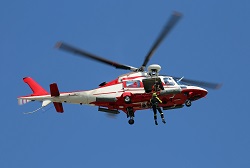Using photonics for a more connected world
In the near future, a major increase in telecommunication satellites capacity will be required, not only to address the challenges of the Digital Agenda for Europe(opens in new window), but also to remain in line with the steeply rising evolution of terrestrial communications in a globally connected world. With current radio frequency (RF) technology, there is a linear relationship between the size, mass and power consumption of telecommunications payloads and their capacity. Photonics is the science of light (photon) generation, detection and manipulation. It has largely contributed to the revolution in information technology for terrestrial applications. Photonics is the most promising technology for overcoming the issues faced by telecommunications satellites, thanks to the compact, lightweight and low-power nature of optical-fibre based equipment. The EU-funded OPTIMA(opens in new window) project set out to demonstrate the concept and benefits of a photonic payload for telecommunication satellites. The project aimed to unite the efforts of industrial and academic European actors from the fields of both space and terrestrial communications. The researchers conducted a selection campaign of payload components that would help predefined environmental tests. After developing a demonstrator, the OPTIMA team developed fully functional modules and packaged them according to suitable package design for a future payload. The team successfully tested the performance of the OPTIMA photonic payload: it passed all the compliance, characterisation and validation standards required for it to be ready for testing as a prototype in orbit. The researchers introduced the optical switch matrix during the final validation of the demonstrator, and found that it had little impact on performance, other than the expected slight reduction in end-to-end gain.
Orbit-ready prototype
The OPTIMA team demonstrated a world first by qualifying a highly reconfigurable, modular, high-order, optical switch to such a high level of technology readiness, fulfilling the stringent vibration and shock test requirements. The researchers demonstrated – for the first time – an orbit-ready photonics-based multi-frequency converter chain, operating in Ka and V bands in combination with optical switching based on wavelength-division multiplexing (WDM) techniques. “A great deal of effort is required to bring these benefits to the world of telecommunication payloads, as all the photonics equipment used in terrestrial applications needs to be adapted to endure the mechanical vibrations during launch, and survive for 15 years in the harsh environment of a geostationary orbit,” says OPTIMA project coordinator, Javad Anzalchi, from Airbus Defence and Space.
Looking to the future
“The technology developed in OPTIMA will see the sustained entry of photonics into telecom satellite payloads,” says Anzalchi. “This will enable easier capacity upgrades of multibeam telecommunication satellites and leverage investments in research to address next-generation, coherent inter-satellite links with fully integrated and qualified components.”







